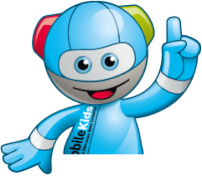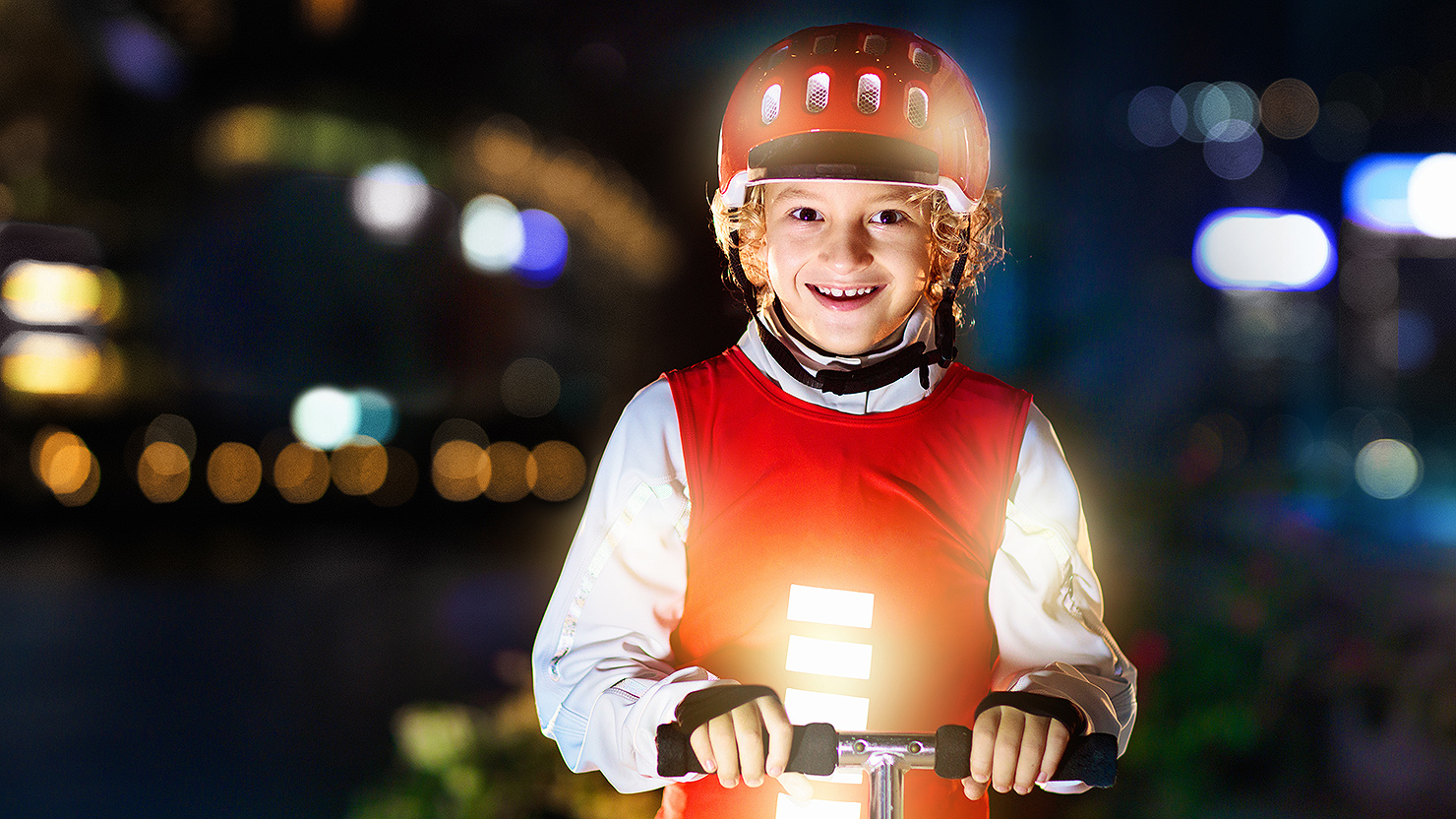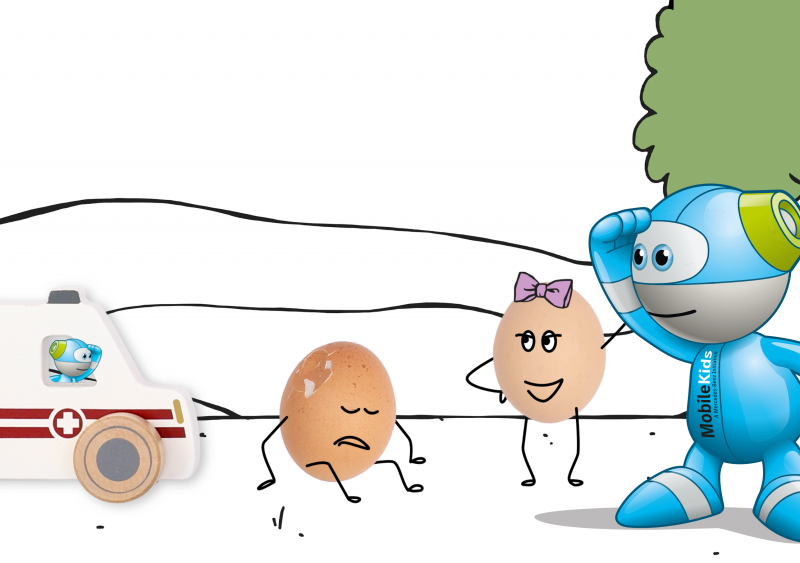In autumn and winter when visibility is poorer, caution is advised. The roads can be slippery as a result of rain and snow, and there is a risk of skidding. For children in particular this is an extremely risky time of year as they are among the most vulnerable road users. This is due in part to their lack of experience and a poorer capacity to react, for example.In the dark it is also more difficult for children to estimate speeds. The perceptive abilities of young people depend heavily on their age. The field of vision of children, particularly at preschool age, is still restricted to tunnel-like vision.
Brightly coloured anoraks, coats and school bags
It can be particularly dangerous early in the morning when children are going to school or waiting at bus stops. It is at this time that darkness additionally restricts the visibility of car drivers, resulting in children easily being overlooked. Bright clothing can help to prevent this. In addition, reflective elements can help to increase visibility. A variety of different products are available commercially which can be easily affixed to clothing or bags. Sturdy shoes with a good tread and non-slip soles are an absolute must for pedestrians during the cold season. These not only ensure a good grip when walking, but also when getting on and off buses and walking up or down stairs.
Cyclists should also check the lights and reflectors on their bike regularly. It is also recommended that gear shift cables and brake cables are carefully lubricated to ensure that they function properly in the wet and cold. In some German federal states the local police stations offer schools a bicycle check-up service to guarantee their roadworthiness and safety in road traffic.
Creating awareness among children
Wearing the right clothing is the number one rule. However, many children are completely unaware of the significance of wearing bright, luminous anoraks, coats and the like. Dark items are often ultimately seen as "cooler". This is where, for a start, all parents are called upon to make their children aware of the different effects of wearing bright and dark clothing when out and about in road traffic. On top of this, as part of Module 1 of the teaching materials - 'See and be seen' - the MobileKids teaching resources provide a variety of ideas on how this topic can be approached as part of lessons. Some of the ideas can also be used at home within the family. Such as the home-made dark box for example, which can be used to enable children to experience first-hand the visibility of items of clothing of different brightnesses in a dark environment.
It is also recommended to walk the route to school regularly with children in order to point out potential spots where visibility might be poor. The general rule is that it is not always the shortest route that is necessarily the safest. It is rather more a case of ensuring that as few roads as possible need to be crossed. And when this cannot be avoided, traffic lights or zebra crossings should be available so that the children are able to cross the road safely.
A safe car ride or a hazardous route on foot?
During the cold season, parents often tend to drive their children to school themselves. According to figures from the German Federal Statistical Office, it is in the mornings in particular before school starts that many children between six and ten years of age are involved in accidents – as passengers in a car. It can be particularly dangerous when for reasons of convenience parents dispense with the required safety measures for the short trip to school. Since 1 April 1993, child seats have therefore been a legal requirement in Germany. Even when travelling by car, all road users must be aware of the potential road traffic dangers which exist.



